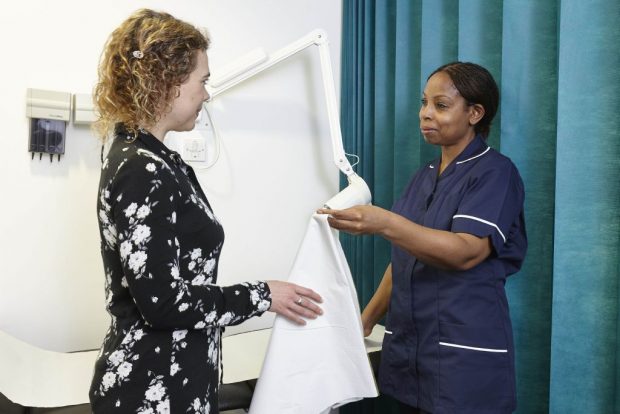
We are pleased to announce that the updated guidance on cervical sample taker training for the NHS Cervical Screening Programme (NHS CSP) is now available.
The guidance aims to:
- promote high quality, specialist training that is consistent with national policy recommendations and programme requirements
- provide a common core of learning for all sample takers to a required minimum standard
- advise on the training requirements for all sample takers in the NHSCSP
- endorse the cervical screening mentor role and the cervical screening assessor role for consistency in training and assessment
- promote interaction across the education pathway
The guidance describes a post-registration education pathway for new cervical sample takers in the NHS CSP.
It also describes the requirement for update training to support sample takers in meeting their clinical and professional responsibilities for continuing professional development and revalidation.
Reviewing the guidance
The Clinical Professional Group (CPG) for Cervical Screening Education and Training (CSET) had established a working group to lead a review of the guidance on the training of sample takers. Sample quality is important to the programme’s success, and it is essential to maintain this with high risk HPV (hrHPV) testing as the primary screen.
The group had looked at sample rejection data (themes) from laboratories in England. They also looked at training provision, training quality, course feedback (themes) and professional support available to trainee cervical sample takers.
The working group had also considered ways of supporting trainee sample takers in their practical training once laboratories stopped providing feedback on transformation zone (TZ) sampling as a quality marker in the new screening pathway. As a result, they created an interim assessment and developed this into an online e-learning resource for trainee sample takers.
Getting feedback
Following this work, we asked for feedback from colleagues working across the NHS CSP on the proposed changes to the education pathway. We also asked colleagues to try out the interim assessment and evaluate that too.
We carefully considered all feedback and were particularly encouraged by the positive response to the online resource as a first step to the trainee sample taker’s unsupervised clinical practice.
The main change to the education pathway is the introduction of the interim assessment. Its purpose is to support the trainee and make sure they are confident and safe to start their unsupervised clinical practice.
PHE provides an online library of cervix images with supporting case information. For each image selected, the trainee reviews the case history and discusses with their mentor the screening needs of that person.
How to access the interim assessment online
The resource is hosted on Health Education England e-learning for Healthcare (ElfH) and is part of a suite of e-learning materials for staff working in NHS screening programmes.
To get started, staff must sign up for e-learning on Health Education England (HEE) eLearning for Health website to access the resource.
Once signed up, click on the module title and follow the instructions on how to use the resource.
Staff using the resource should refer to section 5 (in page link) of the education pathway for guidance on how to conduct the assessment.
Mentors and assessors
The cervical screening mentors and assessors are essential to the quality assurance of the training and assessment process. The guidance outlines the responsibilities of training providers who support these individuals in preparing for, carrying out and maintaining competence in their roles.
Training providers work within a quality framework and are fully responsible for the content and provision of their courses in accordance with the guidance.
We recommend a minimum of 12 hours for the initial training (theory) course. This includes at least 3 hours practical (classroom) training where the sample taker can practise their technique on a pelvic model.
The initial theory course underpins the knowledge requirements for cervical sample takers. It must cover all topic areas described in the guidance and all the competencies outlined in the Skills for Health competency framework.
Before undertaking their final clinical assessment, the trainee sample taker must now take 20 acceptable samples as determined by the national guidance on sample acceptance.
Thanks to all contributors
We would like to thank all contributors to this work, particularly: Carol Barber, Helen Burrell, Helen Doherty, Katharine Gale (Royal College of Nursing), Jill Fozzard, Gail Oliver, Imogen Pinnell (Jo’s Cervical Cancer Trust), Katie Storer, Ruth Stubbs, Sharon Whitehurst, Catherine Witney and Roni Wood.
We would also like to thank all colleagues on CSET and from the Cytology Training Centres for their feedback and support in updating this guidance.
PHE Screening blog
The PHE Screening blog provides up to date news from all NHS screening programmes. You can register to receive updates direct to your inbox, so there’s no need to keep checking for new blogs. If you have any questions about this blog article, or about population screening in England, please contact the PHE screening helpdesk.